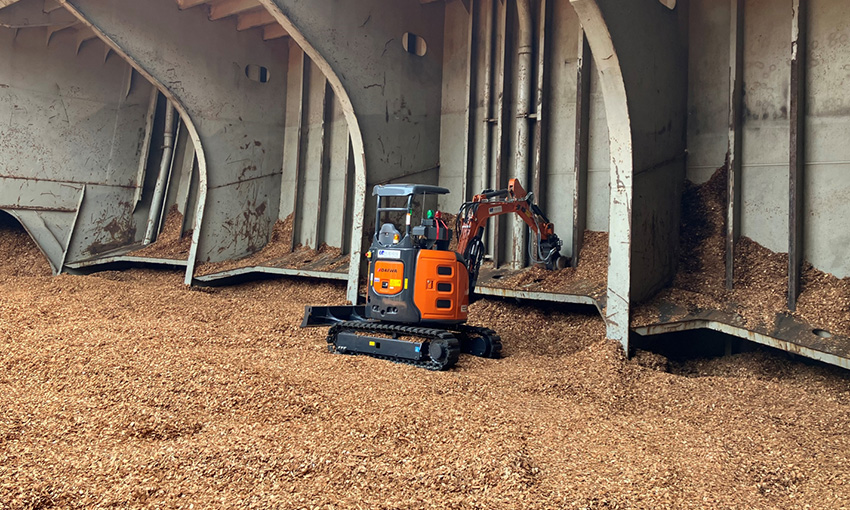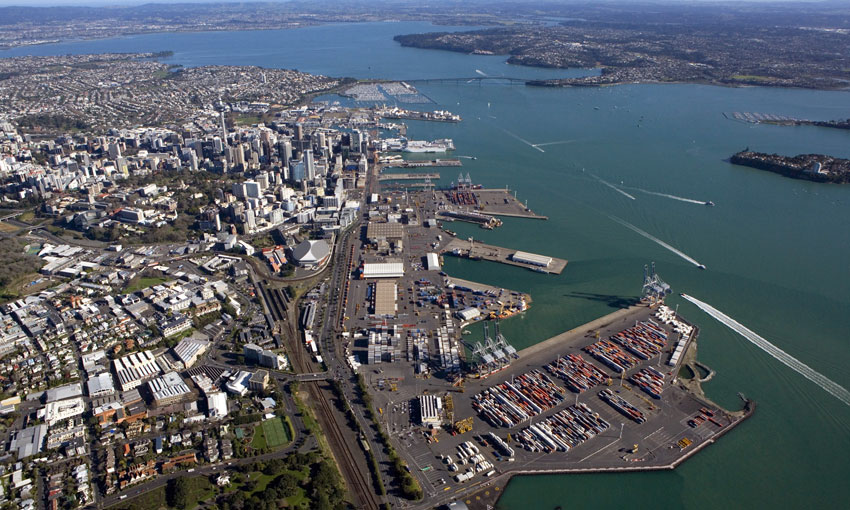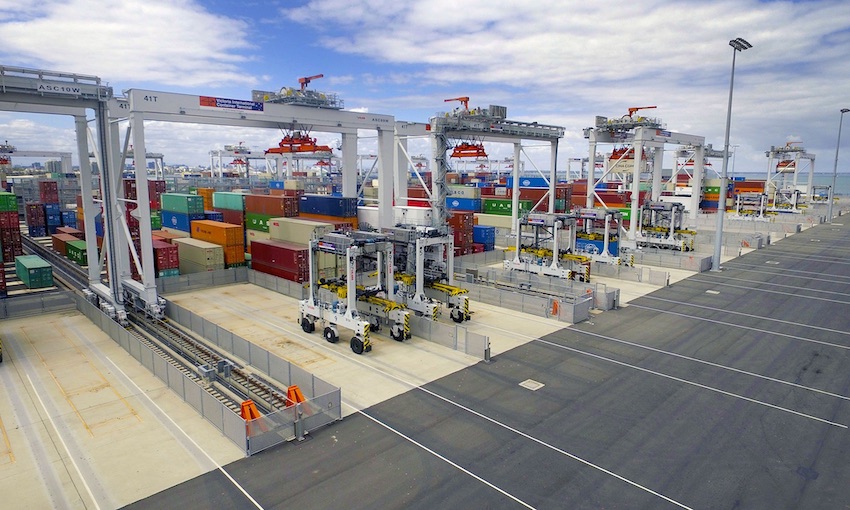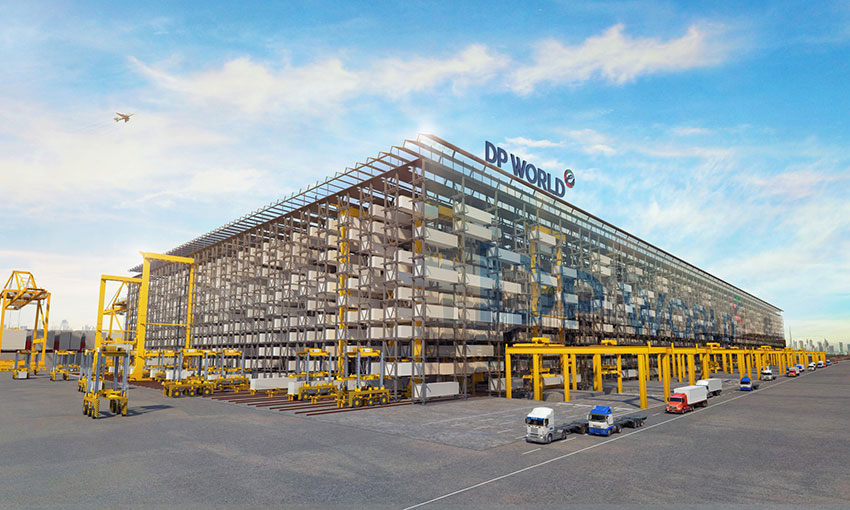JAPAN’S NYK and its partners have developed a remote-controlled robot that scrapes cargo residues in the holds of woodchip carriers.
In conjunction with cargo owner Nippon Paper Industries, designer/developer Chinougijutsu Co Ltd and stevedores Iwakuni Sangyo Unyu, NYK earlier this month conducted a successful trial at Nippon Paper Industries’ Iwakuni mill in Yamaguchi Prefecture.
“Through the development of the scraping robot, the four companies will work to realize a safe and sustainable cargo-handling environment,” NYK said. “In the future, the four companies aim to realize a cargo-handling environment where not only men but also women, elderly people, and people with disabilities can engage in cargo handling by operating robots from remote locations away from the cargo-handling site.”
In the trial, a prototype scraping robot was operated on a wood-chip carrier engaged in a long-term transport contract with Nippon Paper Industries and NYK. The four companies operated the robot remotely in the ship’s hold for about two hours during cargo unloading and achieved the goals, including confirming the scraping robot’s functionality.
Woodchips loaded into the hold of a wood-chip carrier are traditionally gathered by excavators and unloaded by cranes. The woodchips that have accumulated in the corners of the holds or adhered to the walls are collected and scraped off by workers using shovels, forks, and other tools because heavy machinery cannot reach those wood chips or may damage the hold walls when scraping.
There is room for improvement in the current work environment because the scraping process requires climbing up and down the 10-metre holds, the tendency for the holds to be cold or hot due to seasonal factors, and the risk of oxygen deprivation due to the wood chips absorbing oxygen. There are also concerns about future staff shortages due to the aging of the workforce, NYK said.
A remote control moves the arm of the scraping robot’s hydraulic excavator and the attached scraper (spatula) and brush.
The robot can extend its arm up to three meters high to remove chips from walls, while wood chips that have accumulated in corners can be directly gathered by the lowered arm or pushed out by the brush. The scraping robot can also scrape wood chips trapped in tight spaces, such as structural gaps.
The four companies aim to complete and use the first unit for actual cargo unloading by the end of fiscal 2024.





